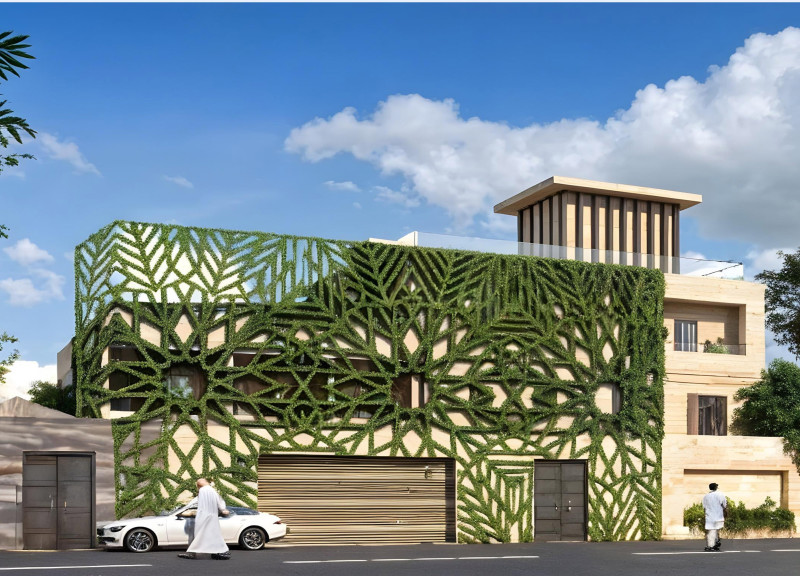5 key facts about this project
One of the key aspects of this project is its architectural form, which is designed to complement the topography of the site. The building's silhouette is both modern and contextual, allowing it to resonate with its surroundings without overshadowing them. By employing a harmonious palette of materials, including concrete for durability, glass to enhance transparency and connectivity with the outdoors, and reclaimed wood for warmth, the project illustrates a commitment to sustainable practices. The selection of materials not only reflects modern ecological considerations but also enriches the sensory experience of the space.
The layout of the project has been meticulously organized to prioritize flow and accessibility. Entryways are strategically positioned to encourage movement, leading users through a series of interconnected spaces that promote both solitude and collaboration. Public areas are thoughtfully designed to be inviting, featuring ample natural light that creates an uplifting atmosphere. The design incorporates flexible spaces that can adapt to various activities, ensuring that the architecture remains responsive to the needs of its users over time.
Unique design approaches are evident throughout the project. For instance, the use of green roofs and living walls not only enhances the building's aesthetic appeal but also contributes to environmental sustainability. These elements provide insulation and reduce the urban heat island effect, while also creating a habitat for local wildlife. The integration of biophilic design principles encourages a connection to nature, impacting the well-being of the occupants in a positive way.
Moreover, the building's orientation has been carefully considered to maximize natural light and views while minimizing energy consumption. Large windows and strategically placed overhangs allow for passive solar gains during winter while shading spaces during the heat of summer, demonstrating a keen awareness of environmental dynamics.
In addition to its architectural significance, the project fosters a sense of community through well-designed outdoor spaces. Courtyards and gardens invite collaboration and relaxation, offering a retreat from the hustle of urban life. These areas are not merely afterthoughts but integral components of the architecture, promoting social interaction and providing a backdrop for outdoor activities.
As one explores the architectural plans, sections, and design layouts, it becomes apparent how each element contributes to the overall narrative of the project. The combination of functionality and aesthetic appeal illustrates a mature approach to architecture, where each decision is rooted in a deep respect for both the environment and the community it serves.
By delving deeper into the architectural designs and ideas presented, readers can appreciate the nuances that make this project an engaging and relevant addition to the modern architectural landscape. The thoughtful execution of this design serves as a reminder of the impact well-crafted architecture can have on our daily lives, encouraging a conversation about the importance of context, sustainability, and community engagement in future architectural endeavors. Explore the project presentation to gain further insights into this compelling architectural work, where every detail has been considered with care and intention.























